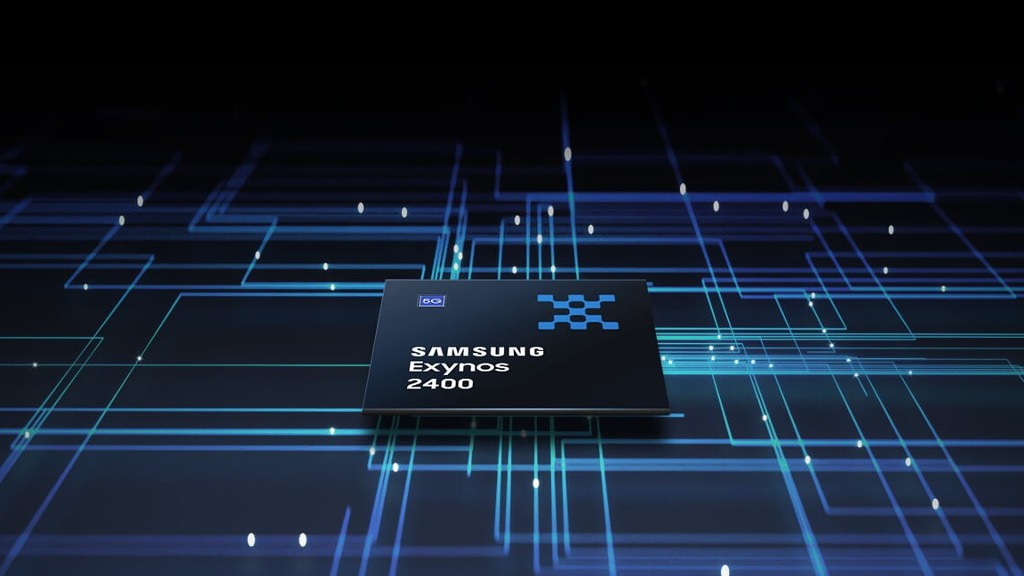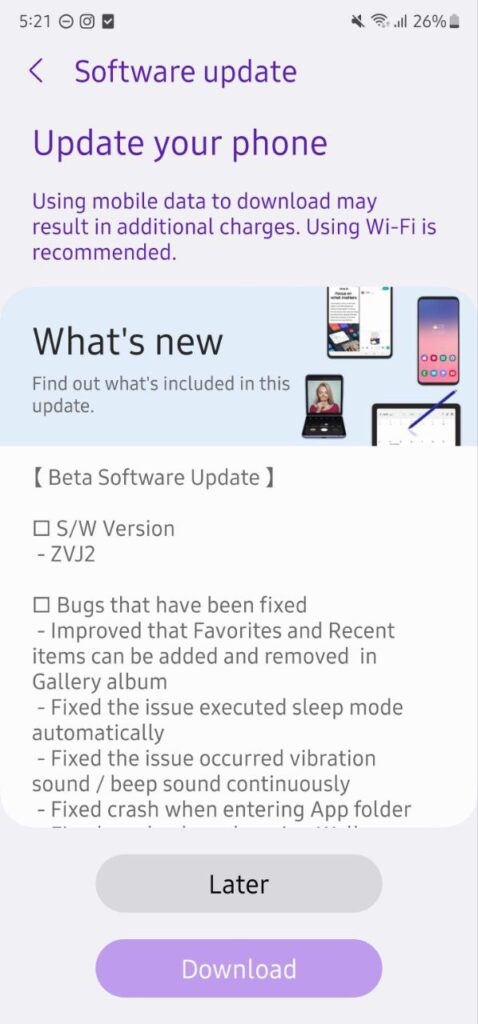News
Samsung rolling out One UI 5.0 Beta 4 to Galaxy S22 with several fixes, scraps multi-user feature

Samsung begins rolling out the One UI 5.0 Beta 4 update for the Galaxy S22, S22+ and S22 Ultra smartphones. The fourth One UI 5.0 Beta update [ZVJ2] comes with lots of bug fixes that were reported by consumers as well as it removes the multi-user feature.
Animations
System Animation is the biggest concern of the One UI 5.0 software system. Yet again, Samsung mentioned that it has improved the system animation functionality with the fourth One UI 5.0 Beta update. Meanwhile, it’s yet to be verified how much the company improved animations.
Join Sammy Fans on Telegram
The changelog of the Galaxy S22’s fourth One UI 5.0 Beta suggests that the frame drop issue when jumping from widgets to the homescreen is getting fixed. However, we expect other aspects of the software system will get enhancements, especially for the animations.
Also Check | System Animations are not so exciting in One UI 5.0 Beta 3: Video
[RIP] Multi-user feature
Samsung One UI 5.0 Beta 4 update removes the multi-user profiles feature from the Galaxy S22 series devices. It was earlier expected to go live for more models with Public Samsung Android 13 release but the company discontinued it due to major bugs.
Follow Sammy Fans on Google News
Once again, Galaxy smartphone users are required to wait for an unspecified time for the multi-user feature. It’s worth mentioning that Samsung tablets already offer the multi-user feature, which was initially debuted on Pixel phones nearly a decade ago.
Also Read| Samsung should bring back multi-user feature with One UI 5.1 [Android 13]
Important changes
Talking about bug fixes, the Galaxy S22’s One UI 5.0 Beta 4 improves the Gallery app so you can add or remove favorites and recent items in the Album. Moreover, it solves the issue of the automatic launch of random functions in some cases along with the virtual vibration/beep issue that occurs continuously.
Users reported having crashing issues while accessing the app folder and wallpapers interface, which is now being fixed with the fourth One UI 5.0 Beta update. The 3rd Beta brought a whole new Wallpapers section, but it was not accessible due to continuous crashing problems.
The Galaxy S22 Ultra users were facing issues in using the S Pen Air Command feature occasionally, which are now being improved to offer the best possible user experiences. Object Eraser, Shadow Eraser and Reflection Eraser apps stopped working with the 3rd Beta installation, which will now be becoming accessible again.
Note: The update is initially rolling out in South Korea, and Samsung will soon expand it to more markets.

Update 1:
Samsung expanded the latest One UI 5.0 Beta update for the Galaxy S22 series consumers in the United States and India.
Update 2:
Fourth One UI 5.0 Beta update is now making its way to the European market, with Germany being the initial market for the new firmware. It will soon be available in Poland and the United Kingdom too.

Update 3:
Samsung has now pushed the latest One UI 5.0 Beta update for the Galaxy S22 series in the United Kingdom. It’s the third Beta firmware for the consumers, while it packs the same content as the fourth Beta of Korean and US models.
Samsung Galaxy S22 One UI 5.0 Beta 3 (4) – UK #Samsung #GalaxyS22 #OneUI5 #Android13 pic.twitter.com/Iuwp8EpZWE
— Samsung One UI Updates (@SamsonUpdate) October 7, 2022
Update 4:
Samsung kicked off the latest One UI 5.0 Beta update for the Galaxy S22, S22 Plus and S22 Ultra devices in the last eligible European country – Poland. It comes with the October 2022 patch, and changes in various segments of the software system.
Samsung Galaxy S22 One UI 5.0 Beta 3 (4) – Poland #Samsung #GalaxyS22 #Android13 #OneUI5 pic.twitter.com/FrcIn1OBdl
— Samsung One UI Updates (@SamsonUpdate) October 8, 2022
Update 5:
Samsung has now released the latest Galaxy S22 One UI 5.0 Beta firmware update in China, which was the last remaining market for the fourth Beta update. It’s expected that the company may soon release the official version without jumping to the 5th Beta update.
News
Samsung boosts HBM capabilities with new investments

Samsung has reportedly signed a contract valued at around $15 million to sell and purchase semiconductor equipment to expand HBM chip production facilities at its Suzhou plant in China.
BusinessKorea reports that Samsung is expanding its investments across HBM facilities. The company aims to strengthen its advanced semiconductor packaging to lead the supply chain.
Eying the HBM4 chip boom, the Korean tech giant is focusing on enhancing its packaging capabilities to secure future technological competitiveness and narrow the gap with SK Hynix.
KEDGlobal revealed that Tesla asked Samsung and SK Hynix to supply HBM4 samples. The US EV maker could choose either Samsung or SK Hynix as its HBM4 supplier after testing samples.
Pay attention, packaging includes the tech and processes for shaping semiconductor chips to fit the devices they will be mounted on – making it an important aspect of development and production.
Notably, the Suzhou China facility is currently Samsung’s test and packaging production base outside Korea. Increased investment is seen as a choice for innovation in packaging processes and production efficiency.
Apart from this, the company is also ramping up its packaging production bases in Korea. Samsung has recently signed an investment agreement with South Chungcheong Province and Cheonan City.
News
Samsung could get a major role in Tesla’s AI revolution

Tesla reportedly asked Samsung and SK Hynix to supply HBM4 chip samples. Both semiconductor firms are developing sixth-generation high-bandwidth memory chip prototypes for Tesla.
KEDGlobal reports that Tesla asked Samsung and SK Hynix to supply HBM4 chips for general use. It is expected to choose one of the two companies as its HBM4 supplier after testing their samples.
Using custom HBM4 chips made by Samsung and SK Hynix, Tesla seeks to enhance its artificial intelligence (AI) capabilities apart from reducing AI chip reliance on Nvidia.
Samsung is working hard to win Tesla orders for HMB4 chips. The company even working with Taiwan’s TSMC to foster its HBM chip’s development and maintain an edge over SK Hynix.
SK Hynix is also accelerating its development to maintain its leadership in the HBM space. The firm winning Tesla’s HMB orders would see a sharp push in the global memory supply chain.
Notably, the 6th-gen HBM4 chips are crucial for Tesla’s Dojo supercomputer, which is designed for training AI models and will also support its AI data centers and autonomous cars.
The HBM4 semiconductor offers notable enhancements over the previous generations, delivering up to 1.65 Tbps of bandwidth, 1.4 times faster than the HBM3E while consuming 30% less power.
News
Report: Samsung eyes 2nm Exynos 2600 to attract Qualcomm, Nvidia

Samsung Foundry wants to produce Exynos to attract 2nm clients like Qualcomm and Nvidia. Major chip designers have no option other than TSMC for contract semiconductor production.
Digitimes report suggests that Samsung Foundry wants to produce 2nm Exynos 2600 chipset. The company has recently started Exynos 2500’s mass production for Z Flip 7, Korean media reported.
TSMC is producing 3nm Snapdragon 8 Elite chips for Qualcomm. Nvidia also produces its most advanced semiconductors using TSMC’s cutting-edge process nodes.
The latest report indicates that Samsung Foundry is advancing its semiconductor capabilities. The mass production of Exynos 2600 is under consideration for next year.
Samsung Foundry has no other option but to prove its semiconductor capabilities. If the Foundry division manages to secure decent yield rates in the 2nm process, Qualcomm may ink a deal.
Exynos 2600 is a great opportunity to demonstrate the technological innovations of the Foundry division. It would attract key clients like Qualcomm, marking a strategic push for the business.
Samsung will have 2x benefit with the 2nm process technology. The Exynos 2600 would power the Galaxy S26 series – ending the reliance on Qualcomm for Snapdragon chipsets.
Qualcomm will also get the opportunity to negotiate production costs with TSMC. Samsung Foundry is comparatively cheaper than TSMC as there will be two major options for clients.
“Samsung Electronics’ foundry division is advancing its semiconductor capabilities through the mass production of the Exynos 2600 (tentative name), marking a strategic push for self-sufficiency in mobile application processors (APs).” – Digitimes.














